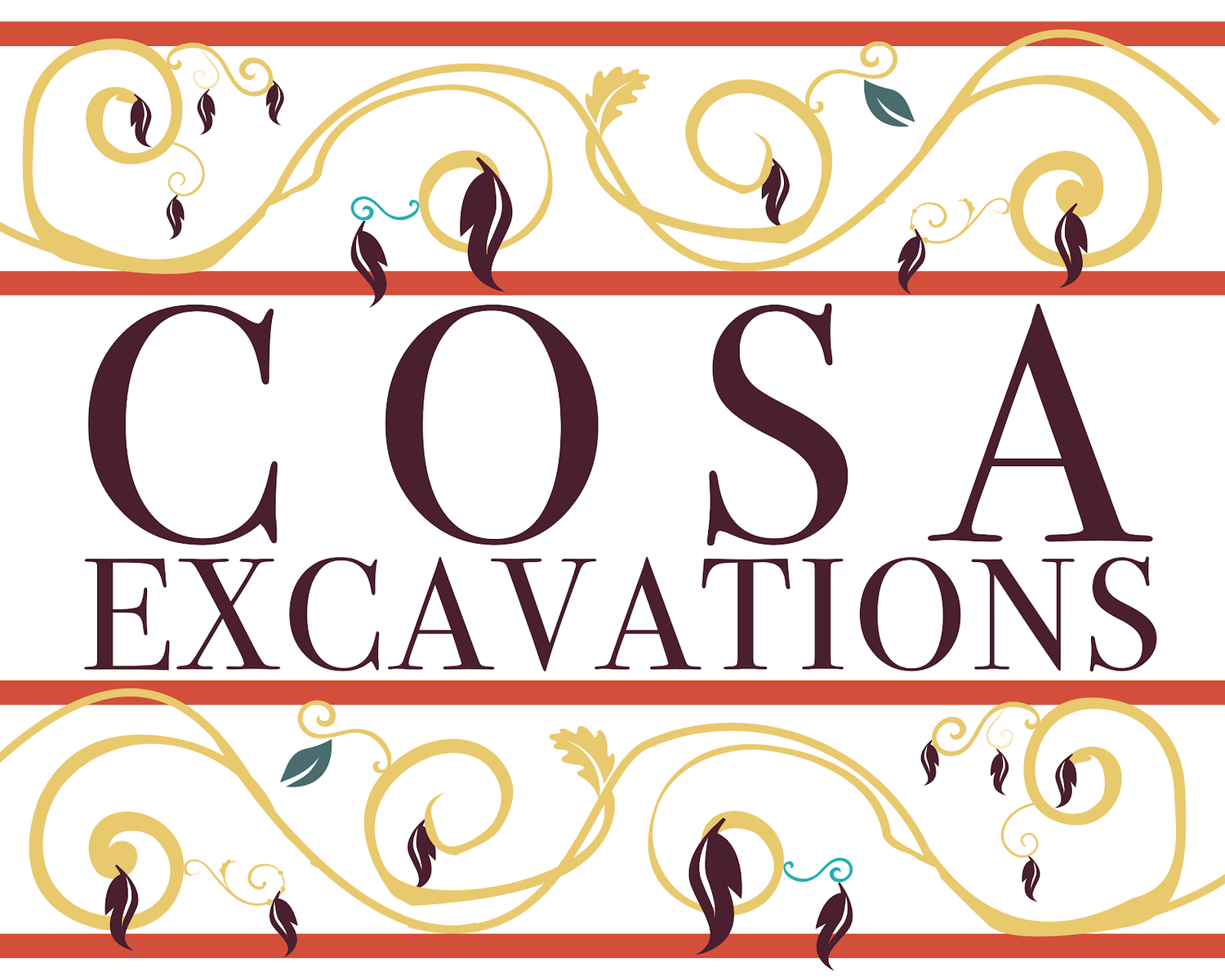The 2014 excavations explored the bath complex, and introduced a concerted effort to bring digital technologies into the field.
The 2014 excavation followed a two-tiered format, with excavations occurring both above and below the bath’s surface. Two large trenches were excavated at the southern edge of the complex proper, producing evidence of a two rooms that were both paved with water-resistant cement. Furthermore, a long bench, perhaps indicative of a changing area for the bath’s patrons, was uncovered running along the eastern and southern walls of one of these rooms. Given the large, marble thresholds associated with one of these rooms, it appears that the entryway into the complex has been found.
Below ground level, multiple areas were explored to investigate the hydraulics and logistics that were associated in running the bath. Most interestingly, the large reservoir to the immediate south of the complex was partially excavated. This area produced a sluice gate from the reservoir attached to a large conduit, which ran underneath the bath complex. Further exploration of these areas are necessary in order to understand the capacity and management of the bath’s water supply. Given that Cosa is a waterless hill, it is important to understand fully the coordination and use of so precious a commodity to the colony as water.
The 2014 excavation season produced intriguing evidence for the chronology of the bath complex. As exhibited by the material found both this season and in 2013, the complex as seen today appears to date to the Imperial period. On the other hand, there is also evidence that indicates the bath could find its roots in an earlier date, if not into the late Republican period. If this is the case, the site of Cosa could further assert its importance as a Republican colony, especially in terms of its contributions to bathing culture in central and northern Italy.
Quadcopter UAV
A quadcopter UAV was used to perform an aerial survey of the site, as well as to capture high-definition aerial video.
Aerial photos and video serve to document the current state of the site, in addition to being useful as promotional material.
2014 EXCAVATION SUMMARY
Focus – The Bath Complex
Trenches – 5
Participating Universities – 4 Successful Crowdsourcing Campaigns – 2/2
NOTABLE FINDS
ancient coin
3 door sills plaster
terracotta revetment plaques
Photomodeling and Digitization
A two-pronged approach to digitization was undertaken during the 2014 field season.
1. The documentation, digitization, and 3D modeling of the many standing ruins on the site, and the field trenches of the current excavations.
2. The digitization and 3D modeling of a number of small finds in the site storerooms (the material collected by previous excavations), as well as the contents of the small on-site museum.
Geophysics
Dr. Richard Posamentir began the process of surveying and documenting the site in 2013. With magnetometry and ground-penetrating radar (GPR), he and his teammates hope to further our knowledge about the layout of the city that now lies hidden beneath the soil. By combining these nonintrusive studies alongside the intrusive archaeological research that has been conducted at the site over the past decades, we hope to illuminate a clearer and fuller image of ancient life in the town of Cosa.




